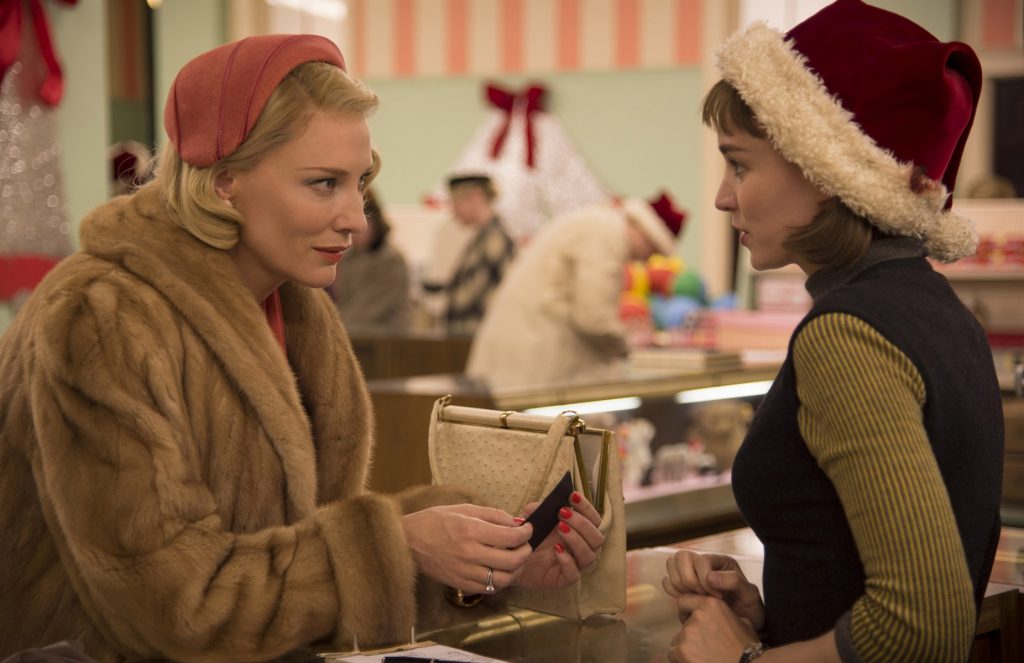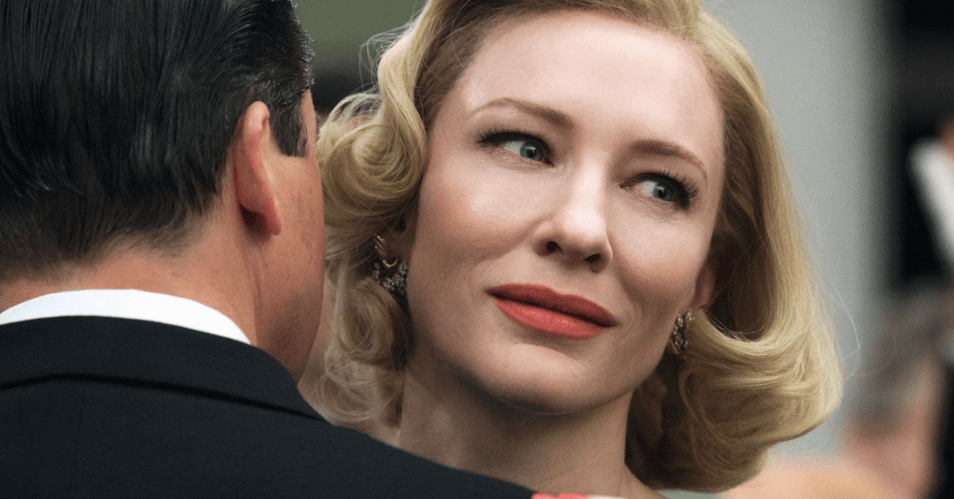To watch the works of Todd Haynes is to confront a sense of loneliness that, ironically, plagues so many in various forms. The sheer variety of this isolation crops up throughout this man’s work as an artist. It’s Safe, and Julianne Moore’s protagonist has become stricken with a mysterious disease that causes everyone around to just avoid her. Maybe it’s Dark Water and the loneliness emerges as a reflection of how hard it can be to fight big businesses. In the case of I’m Not There and Carol, Haynes explores the struggles of pursuing your own identity while existing in a marginalized community in America.
The various manifestations of loneliness across the many works of Todd Haynes exemplify how universal that feeling is. No matter who we are—the rich, the poor, the powerful, the meek, whoever—we’ve all felt lonely. In a world that can make us feel so trapped and helpless, it can be weirdly comforting to get a cinematic reminder that we’re not alone in feeling so lonely. That contradictory experience of feeling better by watching such melancholy emotions reflects a similar complex quality in the works of Todd Haynes.
His films tend to focus heavily on isolation while also giving glimmers of hope that we’re not fighting this tumultuous world on our own.
Haynes has often explored this concept through commenting on movies of the past. Specifically using their iconography and thematic motifs, he then twists them around for his own subversive stories. This was made apparent in his directorial debut, Poison; which features a segment about Dr. MacArthur (Evan Dunsky), who becomes afflicted with horrible scarring. Making use of camerawork and cinematography that alternates between evoking classic monster movies and noirs, Haynes calls upon genres that are built on the foundations of lonely protagonists to visually accentuate the horrors of this man who becomes a societal pariah overnight.
From there, Haynes expands upon his exploration of the lonely by also referencing how the marginalized can belong to larger, more accepting cultures. Just look at Velvet Goldmine protagonist Arthur Stuart (Christian Bale); a young queer man who lives in an intolerant household but finds solace in the works of Curt Wild. The songs by this musician make Stuart feel a little less isolated and still resonate into his adulthood. By escaping into these tunes, Stuart feels, even if it’s just for a few minutes or one night, like he belongs somewhere.
The 2002 project Far From Heaven, meanwhile, captures a trio of people existing in 1950s American society who are all subjugated by this culture’s norms for different reasons (gender, sexuality, and race). Two of our protagonists, played by Julianne Moore and Dennis Haysbert, find comfort in forming a romantic relationship. Tragically, though, the unforgiving nature of society’s intolerance means the solace they’ve found in one another cannot last forever. Here, Haynes depicts two lonely souls finding long-awaited unity in one another…only to then suggest such unity will inevitably be crushed by the suffocatingly restrictive norms of society.

This sense of loneliness manifests in further interesting ways in Haynes’s 2007 movie I’m Not There; an ambitious motion picture examining a multitude of people all meant to represent some part of Bob Dylan.
One of these figures is Richard Gere as an old hermit who’s sworn off interacting with anybody more than his trusty canine. This incarnation of Dylan would like nothing more than to swear off interacting with all other people until the end of time. However, his storyline sees the man’s compassionate nature rearing its head as he learns about the local townspeople getting swindled out of their homes to make way for a freeway.
This thematic motif in Haynes’ work sees the director using cinema, often a vessel for fantasy, to confront harsh reality. Many people in this world are born as outsiders not because of their actions but because of their skin color, their gender, sexual orientation, and other qualities that they’re born with. Haynes isn’t out to make comforting works for privileged groups that suggest we all get along. He’s here to quietly suggest, through elements like the heartbreaking ending of Far From Heaven, the deeply human consequences of society’s tendency to dub people outsiders in this manner.
The explorations of loneliness even see Haynes commenting on the form of cinema itself. For example, Far from Heaven is a homage to the works of Douglas Sirk; and especially tips its hat to Imitation of Life. Rather than traffic in shallow recreations of Sirk’s iconography, Haynes prods the viewer to contemplate why certain marginalized groups weren’t showcased in the era of cinema he’s homaging. He’s using movies of the present to critique art of the past rather than just view it through rose-tinted glasses. In the process, he explores how pop culture can be used to normalize the ostracization of oppressed groups.
These thoughtful qualities make the works of Todd Haynes melancholy reflections on the past and how it informs the continuing issues of inequality in the present.
However, that doesn’t mean all of Haynes’ contemplations of loneliness are inherently morose experiences. Case in point: Carol. This movie has no shortage of moments where the societally-approved isolation of queer women is put on display. We see exactly why Carol (Cate Blanchett) and Therese (Rooney Mara) would feel so lonely in this world as they juggle their desires with society’s expectations of how they’re supposed to behave. But we also see the joy they feel in each other’s company; the quiet sensuality they’re finally able to engage in when cut off from the world. Their loneliness isn’t erased, but at least they now can be lonely together.
While Far from Heaven ended on a brutal note that suggested how the societal forces informing that loneliness would only result in turmoil, Carol gives its protagonists a more hopeful conclusion. Though not all of their problems have vanished, the film’s ending does see Carol and Therese meeting up again at a restaurant with an implication that they will continue their romance from here.
It takes a lot of courage to just exist in the face of loneliness. You don’t have to defeat it or conquer some gigantic task to have a worthwhile existence. Just surviving another day can be enough. In these final moments of Carol, Haynes wrings a moment of quiet triumph as soaring as any conclusion found in the Rocky movies just out of the sight of two queer women committing to each other. In this moment, Carol and Therese, like Haynes as an artist, recognize the overwhelming loneliness that exists in our world; but that also, nobody’s truly alone.

There’s always someone out there that understands our experiences.
For many queer moviegoers growing up in unforgiving circumstances, or queer adults struggling to understand their identity, it’s unspeakable how comforting this approach to the loneliness of the world is. I’d imagine so many LGBTQ+ movie fans have reacted to the works of Haynes like Arthur Stuart pointing wildly to the footage of Curt Wild on his television; finally seeing himself on the screen. It’s always important to see yourself on-screen, especially when it’s in movies as good as Carol or Far from Heaven.
Rather than indulge in trite tidy fantasies that feel too divorced from reality or engage in trauma porn that defines queer people only by their anguish, the works of Todd Haynes unflinchingly confront aching loneliness that exists for them. At the same time, he provides a sprinkling of hope in how there’s a great big LGBTQ+ community that includes people of all shapes and sizes. Even in a world that normalizes bigotry and makes the isolation of queer people the status quo, it is possible to find, as the lonely characters in Haynes’ films do, joy and bonds with others. The filmography of Todd Haynes is a bounty of riches and the isolated yet connected worlds they chronicle is a key reason (among many) why.
Header: Cate Blanchett in Carol (2015)
About the Author
You may also like
-
Big in Japan: The Niche Genre of Asian Films That Never Lost the Fun
-
Screaming, Crying, Laughing — Why Can’t We Get Enough of Gruesome Comedy?
-
A Brief Exploration of LGBTQ+ Depictions in ’80s Cinema
-
The Politics of ‘Attack on Titan’: Reality or Fiction?
-
Celebrating the Magic of Black Witchiness in Entertainment

